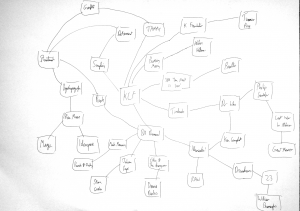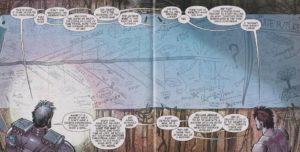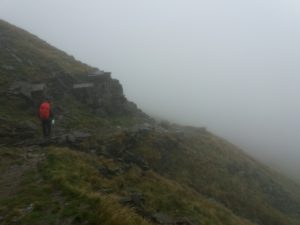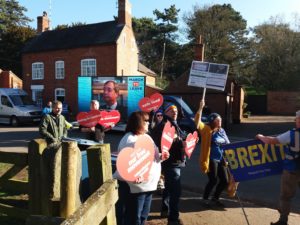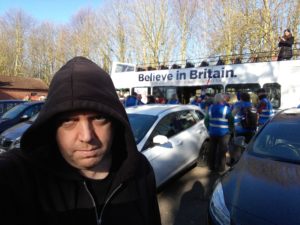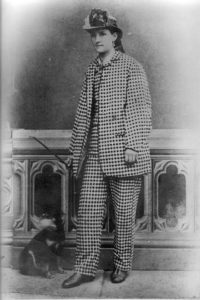(In the previous post, I discussed some background of the march to leave, and how come I ended up there. Here, I’ll talk a little about my visit to the march itself)
 When we arrived at the carpark in Sutton Bonington, a car was parked across the entrance. A man beside it greeted me as we passed: “Hello, mate”. Like all members of the metropolitan liberal elite, I feel nervous when a stranger calls me mate without a bar between us. We continued into the car park, where the March to Leave was gathering.
When we arrived at the carpark in Sutton Bonington, a car was parked across the entrance. A man beside it greeted me as we passed: “Hello, mate”. Like all members of the metropolitan liberal elite, I feel nervous when a stranger calls me mate without a bar between us. We continued into the car park, where the March to Leave was gathering.
Welcome to part two of a longer essay in which spend about 2,500 words trying to talk about Brexit – but instead talk self-indulgently about hiking. Having missed the March to Remain in London the day before, my Dad and I were checking out the March to Leave.
I was definitely in the wrong place: I voted remain in the referendum, think article 50 should be revoked, and loathe much of what leave stands for: the dog-whistle racism of some proponents, the childish economics and the mockery of anyone who doesn’t agree with them. Walking into that car-park, I felt like Agent Philip Jeffries walking into the Black Lodge meeting – and we know how well that went.
That charge of racism is incendiary, and many leave voters would protest it. It’s undeniable that there is a racist element to the leave vote (as shown by the 29th March protests in London). Having the renegade leave.eu campaign running allowed leave to have the unsayable said, while standing aside from it. As former-MP Matthew Paris said of Daniel Hannan, “he has ridden a tiger, and knows the tiger he rides”. But I was also aware that many leave campaigners were not racist, talking about democracy and economics instead. I came with as open a mind as possible, while being very cautious about what I would find.
The march had travelled from Sunderland and is due to arrive in London on March 29th, Brexit Day on Earth-Three. It’s been mocked for the fact that it has not walked the full length between points, and the daily route maps had disappeared from the website, making it harder to find the marchers. Emails about the meeting place were sent quite late, with a time of 8am to 10am for gathering, and a stern warning that we were here at our own risk.
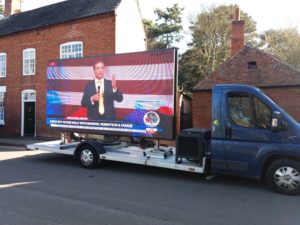 Sutton Bonington is a sleepy English village, with attractive cottages and green open spaces. The march was gathered in a small car-park there, with a playground at one end. Standing by the entrance was a lorry with a video screen. This had been hired by pro-Remain group Lions Led By Donkeys,. Nearby stood a man wearing a keffiyeh, with a sign reading ‘Let my people go’, foreshadowing Boris Johnson’s front page Telegraph column, published the following day.
Sutton Bonington is a sleepy English village, with attractive cottages and green open spaces. The march was gathered in a small car-park there, with a playground at one end. Standing by the entrance was a lorry with a video screen. This had been hired by pro-Remain group Lions Led By Donkeys,. Nearby stood a man wearing a keffiyeh, with a sign reading ‘Let my people go’, foreshadowing Boris Johnson’s front page Telegraph column, published the following day.
After passing the parked-car barricade, we walked down a short track. Most of the people there were middle-aged men, but everyone seemed friendly enough. People milled around, waiting for things to get going, and talked about how the walk was going and its representation in the media. Some of them mocked the previous day’s march in London, which might have had the crowds, but was slight compared to what they were doing.
Most of the attendees seemed, you know, OK. I mean, as normal as anyone who is too interested about one particular thing, right. If these men are too interested in Brexit, and they like walking, then they are, in a way, my people. We have the same hobby, we just disagree about how it should be followed, right?
A woman arrived in suffragette cosplay, and people photographed and posed with her. One person commented that it was “as if a Page 3 turned up”. I saw a walker with four spare plastic union jacks in his backpack. The woman beside him wore a sweatshirt with a ‘PARIS’ logo, so I’m not certain whether she was leave or remain. I definitely don’t know her dog’s opinion, but expect they were in favour of free movement of pets, rather than the six-month quarantine we used to have. And more foreign dogs means more interesting new friends to sniff.
Looking at the gathering marchers, before the support bus arrived, my strongest feeling was that these people were fighting a losing battle. I couldn’t see the young people pictured on the march the day before. Despite being close to what they wanted, there was no sense of celebration, just gloom and defeat.
I was surprised by the defensiveness in the speeches and conversation: after almost three years, Leave have not made Brexit sound like the default option, even in their own minds. There’s a sort of flop-sweat about the whole thing. Leave might have won the referendum, but they need to “get on with it” because they know that history is against them, and this is the only chance they’ll have. Even so close to victory, the whole thing felt like an imminent defeat.
The saddest thing is, I think, that the people in this car park are going to be disappointed in the long term. As the writer Tom Bolton put it, they are flag-waving while drowning.
Anyway, that’s part 2, and the Brexit bus has not yet arrived at the car park. Continue to part 3, where I’ll talk about speeches, ask which side is being manipulated by elites, and describe a brush with the dark side of leave. I’ll also get on with actually talking about hiking. Maybe.
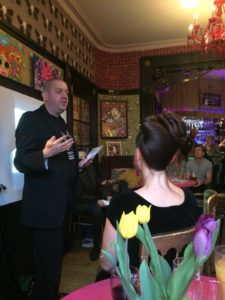 Two weeks ago, I hosted the first of what I hope will become a regular event, Travellers Tales. The Sunday evening event is an opportunity for people to talk about all forms of travel, from holidays to business trips, from tours to kidnappings.
Two weeks ago, I hosted the first of what I hope will become a regular event, Travellers Tales. The Sunday evening event is an opportunity for people to talk about all forms of travel, from holidays to business trips, from tours to kidnappings.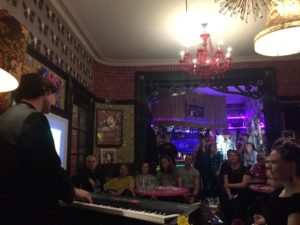 I wanted to hold this event as I felt that travel stories aren’t well served by Facebook posts and online photo albums. Giving someone fifteen minutes to talk about their trip allows them to explore it in a deeper way than social media or one-to-one talks allow. I’d had conversations with all three speakers about their trips, but still leaned new things in this format. It gave the stories space to breathe.
I wanted to hold this event as I felt that travel stories aren’t well served by Facebook posts and online photo albums. Giving someone fifteen minutes to talk about their trip allows them to explore it in a deeper way than social media or one-to-one talks allow. I’d had conversations with all three speakers about their trips, but still leaned new things in this format. It gave the stories space to breathe.
